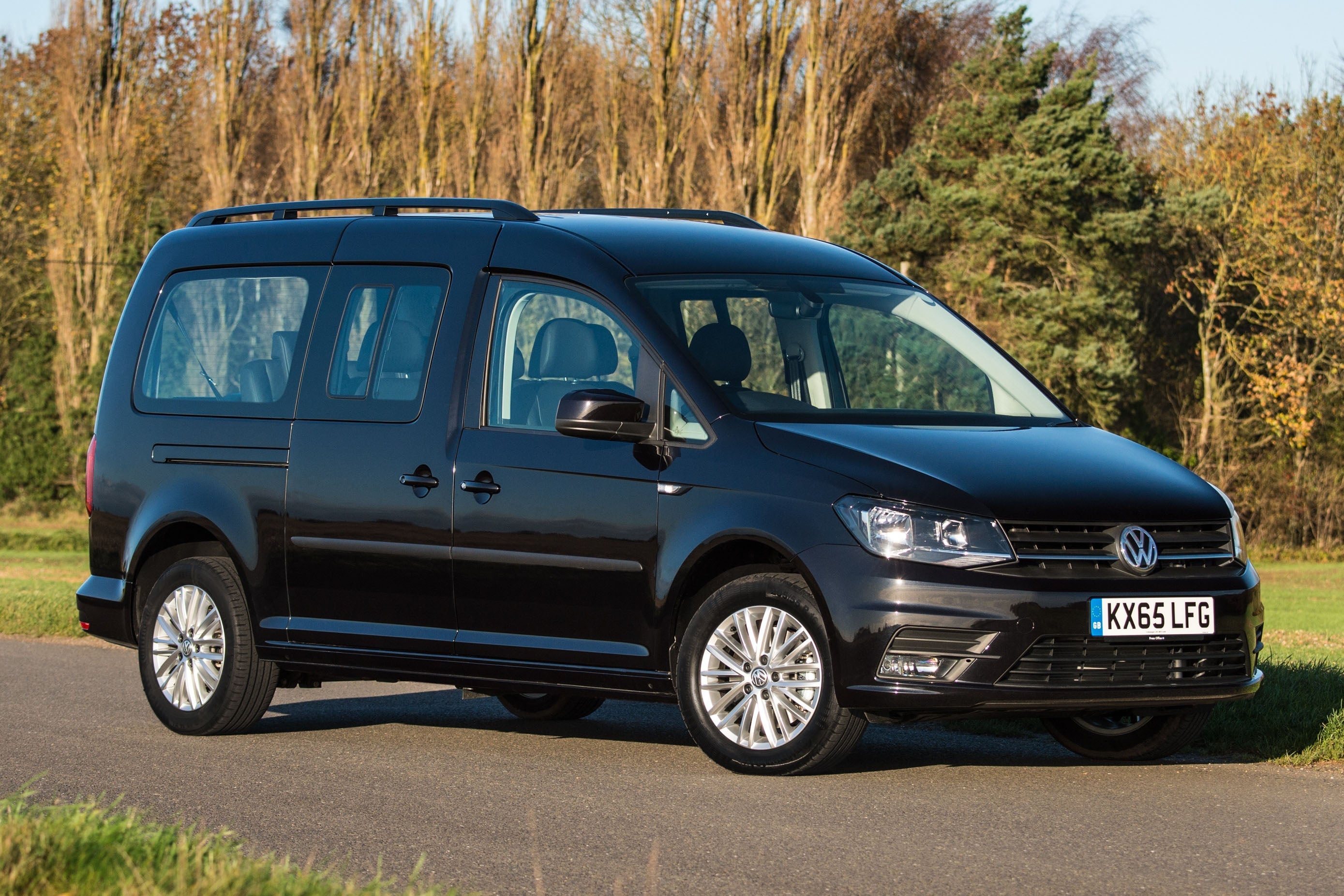Volkswagen Caddy Maxi Life (2015-2021) Review
Written by Andrew Brady
Quick overview
Pros
- Huge amount of space
- Efficient diesel engines
- Easy to drive
Cons
- Not going to turn any heads
- Interior doesn't feel as plush as a more conventional alternative
- Petrol models are rare
Overall verdict on the Volkswagen Caddy Maxi Life
"For buyers who rank versatility and affordability over things like style, a van-based people carrier like the Volkswagen Caddy Maxi Life could be a very sensible purchase. Not only is it cheap to buy, it also has low running costs and will forever surprise you with its load-carrying abilities."
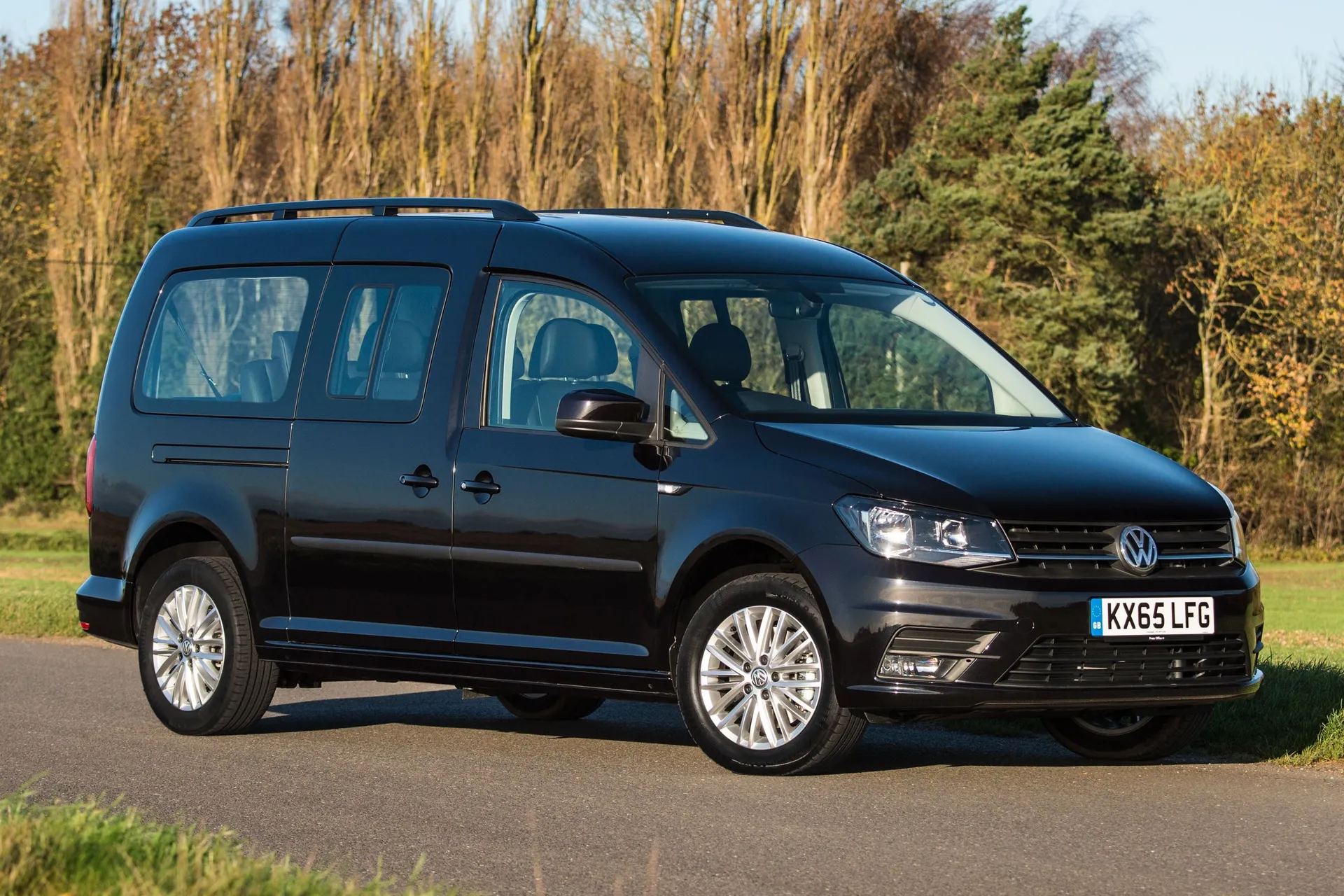
While most buyers default to an SUV as the progression from a family hatch, your money goes a lot further with the Caddy Maxi Life. There's the smaller Volkswagen Caddy Life too, but the Maxi Life is a seven-seater with more space than something like a Skoda Kodiaq. It's a rival to cars like the Ford Tourneo Connect and Citroen Berlingo MPV XL.
It's based on the fourth-generation Volkswagen Caddy van and that means it's got a tonne of space, sliding rear doors and surprisingly low running costs. Sure, it also has a few low-rent plastics and a fairly basic dashboard, but it's fairly inoffensive inside.
Standard equipment is fairly good, too. There's only one model, so no need to spend ages hunting out a specific trim level. All come with DAB radio and alloy wheels, while desirable options include the bigger six-inch media system along with navigation and App-Connect (with Apple CarPlay and Android Auto).
The Caddy Maxi Life's also surprisingly good to drive. Most are fitted with a 2.0-litre turbodiesel engine, which is available in two power outputs (102PS or 150PS), as well as with manual or DSG automatic gearboxes. There's also a small 1.0-litre turbo petrol unit, which is ideal if you cover a lot of short journeys or mainly drive around town.
Its relatively small footprint and impressive visibility combined with light steering mean it feels much like a Volkswagen Golf to drive. It's certainly not as intimidating as you might expect for a van-based people carrier. It also has a pretty soft ride, which means your passengers won't complain too much if you hit a pot hole at speed, and even when empty it won't jiggle about over bumps too much.
The Volkswagen Caddy Maxi Life is a car that laughs in the face of fashion. But it's hugely practical and needn't be the compromise you might expect - it drives just as well as you'd expect for a Volkswagen and its running costs ought to be low, too.
If you're looking for the smaller five-seat version, read our Volkswagen Caddy Life (2015-2021) review. If you're after the newer version, you need our Volkswagen Caddy (2021-) review.
Comfort and design: Volkswagen Caddy Maxi Life interior
"If you find that a standard people carrier doesn’t have enough storage for family life, a van-based people carrier like the Volkswagen Caddy Maxi Life could be the answer."
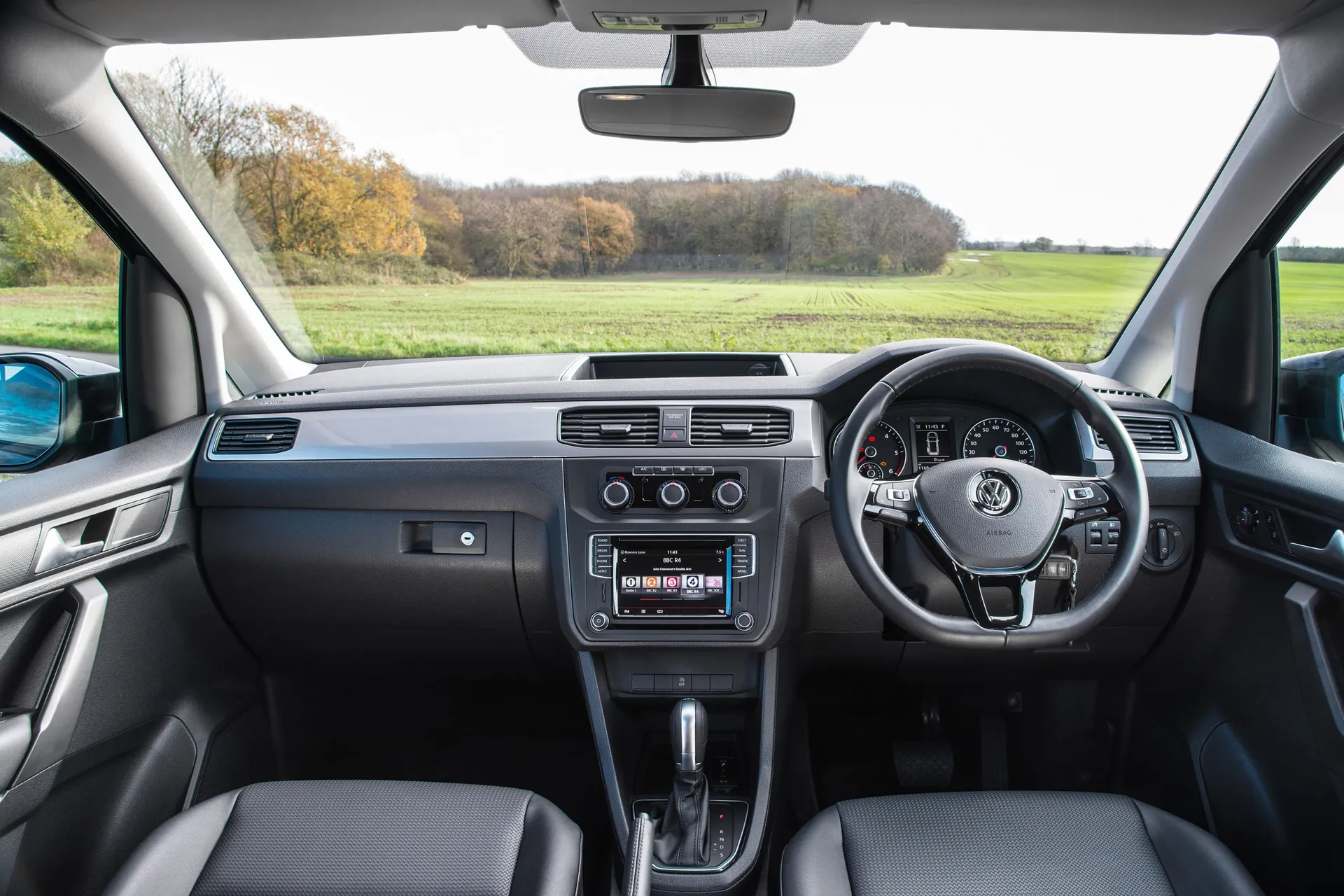
There’s a huge amount of headroom and loads of useful storage, including deep door pockets, cubby holes and even a useful roof shelf above the driver. In the back, there are two storage underneath the floor, while the third row of seats are great for kids. Adults might find them a little cramped, but they’re fine for occasional use.
Both the second and third row of seats can be folded completely flat, which provides van-like practicality. Sliding doors are standard, which helps with access, particularly when trying to strap kids in while parked in a tight parking space.
What engines and gearboxes are available in the Volkswagen Caddy Maxi Life ?
"The majority of Volkswagen Caddy Maxi Life models are powered by the 2.0-litre TDI diesel engine, which was sold with two power outputs: 102 or 150PS. If you’re expecting to carry a car-full of passengers and their luggage regularly, you might be better looking for the more powerful engine, especially as this is also available with a DSG automatic gearbox."
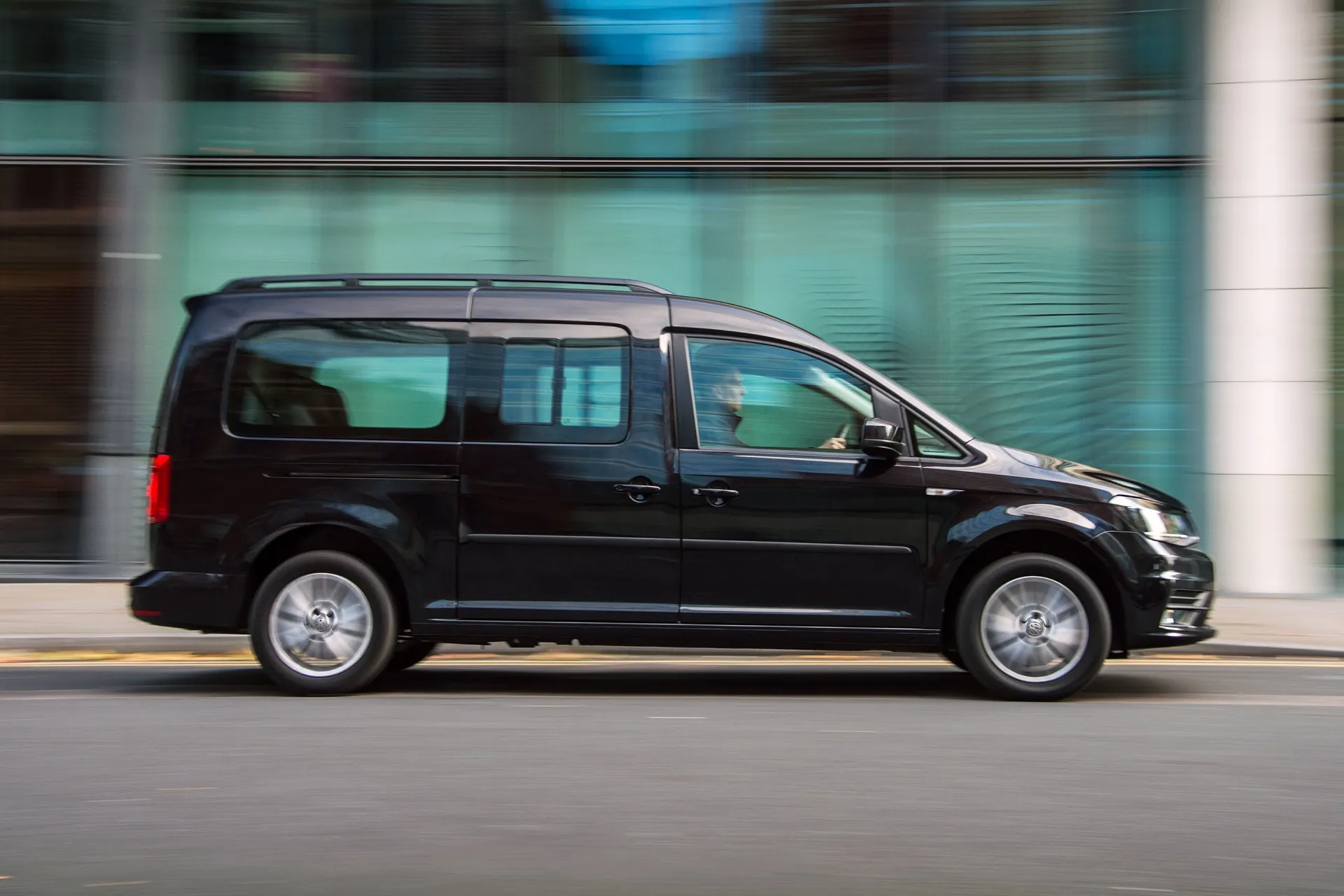
If most of your driving is around town, look for one of the rarer petrol models. This uses Volkswagen’s peppy 1.0-litre TSI engine although, as you might expect, it lacks the pulling power of the diesels.
Despite its commercial vehicle origins, the Volkswagen Caddy Maxi Life is surprisingly good to drive - more like a large hatchback than a van. The ride quality’s pretty good, too, with plenty of cushioning in the suspension to cope with broken road surfaces and speed bumps. Even when it’s empty, the Caddy Maxi Life remains fairly composed - something that can’t be said for other van-based people carriers.
With light steering, the Caddy Maxi Life is easy enough to drive around town, helped also by the large windscreen and chunky door mirrors. If we had one complaint, it’s that there’s quite a lot of wind noise at higher speeds, but that should be expected from a car with all the aerodynamic properties of a brick.
MPG and fuel costs: What does a Volkswagen Caddy Maxi Life cost to run?
"The most efficient Volkswagen Caddy Maxi Life is the lower-powered 2.0 TDI, which officially returns up to 49.6mpg with the manual gearbox."
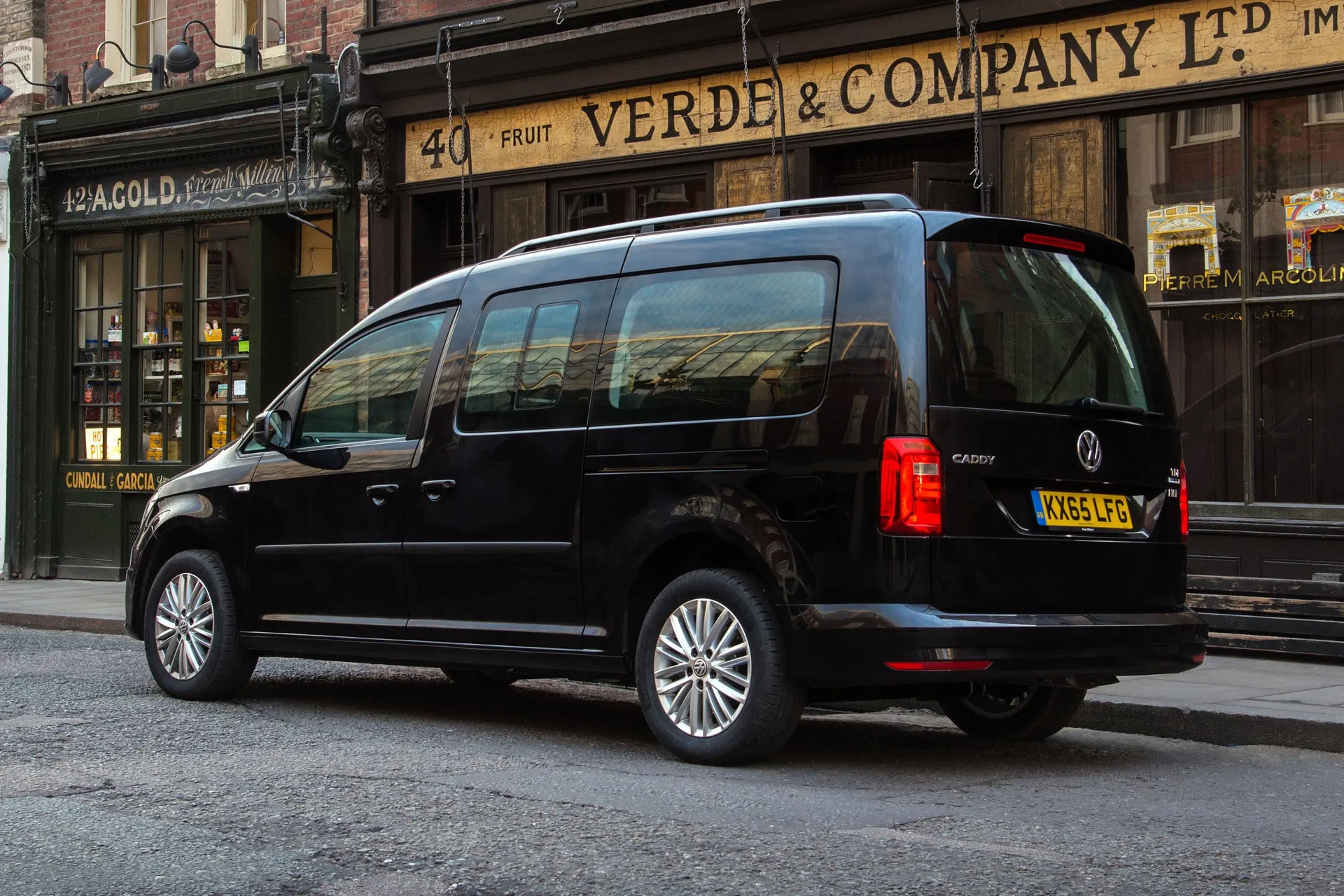
Fuel economy drops to 46.3mpg with the automatic gearbox, while the 1.0 TSI is officially rated at up to 39.2mpg. You might struggle to see this in reality, especially if you're driving with a full load.
How much should you be paying for a used Volkswagen Caddy Maxi Life?
"There’s just one model of Volkswagen Caddy Maxi Life so, aside from picking an engine, you don’t have much choice. Which makes life easy."
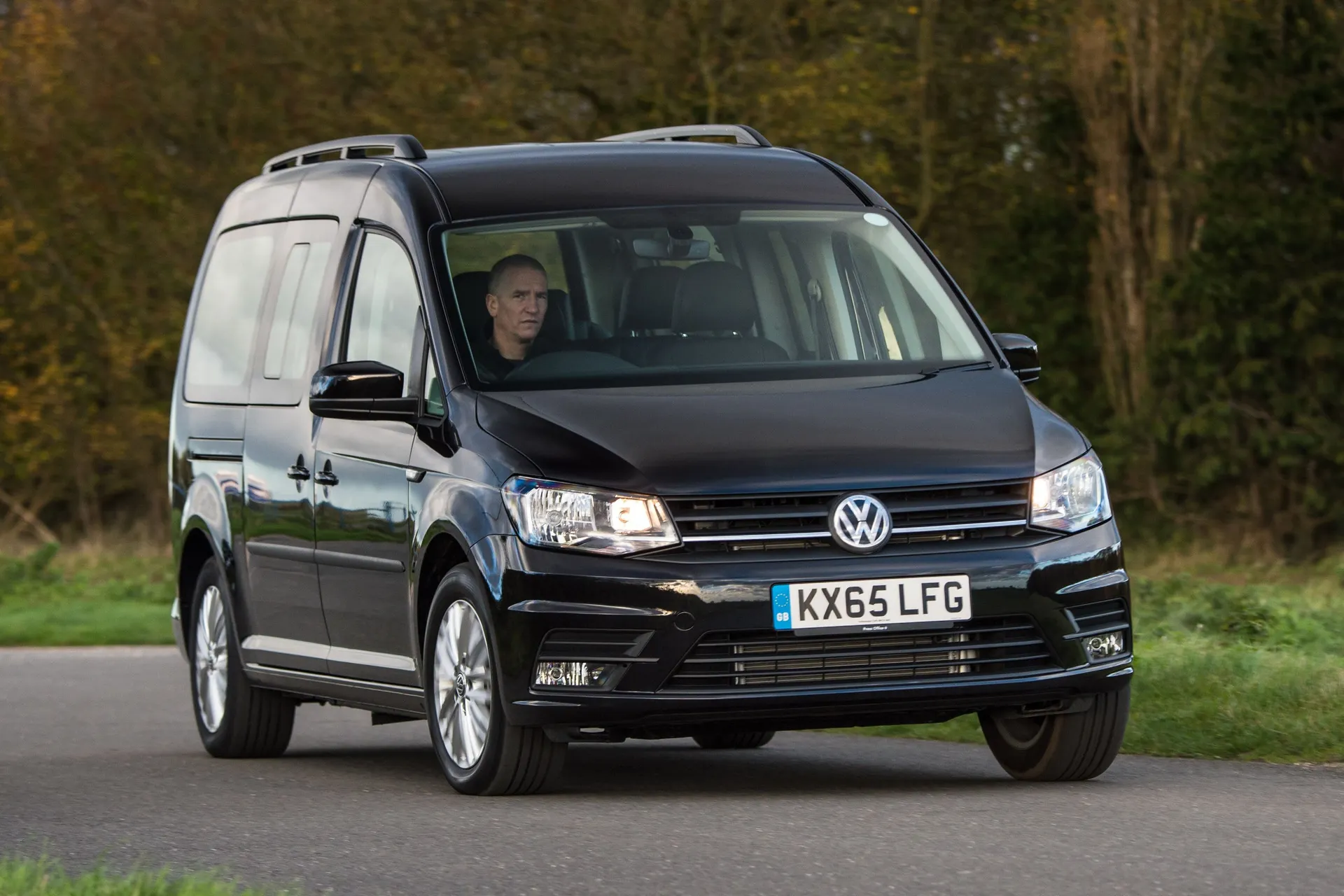
Standard equipment includes 16-inch alloy wheels (the standard Caddy Life makes do with steel wheels), body-coloured bumpers and black roof rails. Inside, there’s electric front windows, DAB radio and Isofix child seat mounting points on outer rear seats.
A new Volkswagen Caddy Maxi Life petrol starts from around £26,000 for the petrol, while the diesel is about £300 more. A diesel with the DSG automatic gearbox will set you back around £28,600.
You can pick up a nearly-new example for around £20,000 - a decent saving; while a three-year-old model with average miles can be found in the region of £15,000.
Get our latest advice, news and offers
Keep me updated by email with the latest advice, news and offers from heycar.
By submitting you agree to our privacy policy
